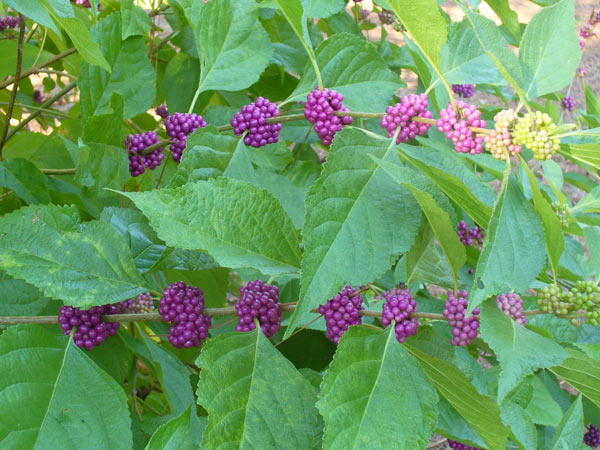 Tucked into woodland edges and sun-dappled clearings across the southeastern United States, the American beautyberry (Callicarpa americana) stands out with its vivid clusters of purple berries. More than just eye-catching, this native shrub carries a legacy of folklore, healing, and resilience—rooted in centuries of use by Native American tribes and early settlers.
Tucked into woodland edges and sun-dappled clearings across the southeastern United States, the American beautyberry (Callicarpa americana) stands out with its vivid clusters of purple berries. More than just eye-catching, this native shrub carries a legacy of folklore, healing, and resilience—rooted in centuries of use by Native American tribes and early settlers.
A Native Treasure
Long before beautyberry became a landscape favorite, Native American tribes like the Creek, Choctaw, and Seminole recognized its value. They used various parts of the plant medicinally and practically:
Medicinal Uses: The roots, leaves, and berries were used to treat a range of ailments. Decoctions of the roots were sometimes used to treat fevers and stomachaches. Crushed leaves were applied topically for itchy skin or used in poultices to treat rheumatism.
Natural Insect Repellent: One of the most intriguing uses was as a bug deterrent. Native people crushed the leaves and rubbed them on their skin to ward off mosquitoes and biting flies—a practice later adopted by early European settlers. In fact, this use gained scientific attention during World War II, when USDA researchers studied beautyberry compounds for potential mosquito repellents.
Pioneer Ingenuity
American pioneers continued many of the Native uses and added their own. Beautyberry leaf tea was used as a general health tonic, and berries were sometimes cooked into jellies and wines—though raw berries are bland and astringent, they transform with a little sugar and heat. Some settlers used bark and roots in homemade tinctures for colic and other digestive troubles.
Folklore and Superstition
In Southern folklore, beautyberry was sometimes planted near homes not just for its beauty but for protection. Its vibrant berries were said to bring good luck or ward off negative energy. The plant’s long-standing association with resilience—blooming even in poor soils and hot summers—earned it a reputation as a symbol of endurance and vitality.
Modern Uses and Garden Appeal
Today, beautyberry is prized for its ornamental value, particularly in native and pollinator gardens. Its graceful arching branches, pale green leaves, and eye-popping purple berries attract not just human admirers, but birds, especially mockingbirds, cardinals, and finches. The berries ripen in late summer and persist into fall, providing food when other sources are scarce.
Some gardeners still make small-batch beautyberry jelly, and naturalists appreciate its low-maintenance nature. And while science hasn’t yet fully validated all of its traditional uses, ongoing research into its insect-repelling compounds shows promise.
Growing Beautyberry
Hardiness Zones: 6–10
Light: Full sun to part shade
Soil: Adaptable; prefers well-drained soils
Care: Prune in late winter for shape; berries form on new growth
In a landscape filled with both beauty and history, American beautyberry stands out as a plant that’s not only lovely but also deeply rooted in tradition. Whether you’re drawn by its folklore, its medicinal past, or simply the sight of those jewel-toned berries glowing in the autumn light, beautyberry is a worthy addition to any garden—and a living link to those who came before us.
